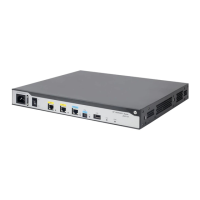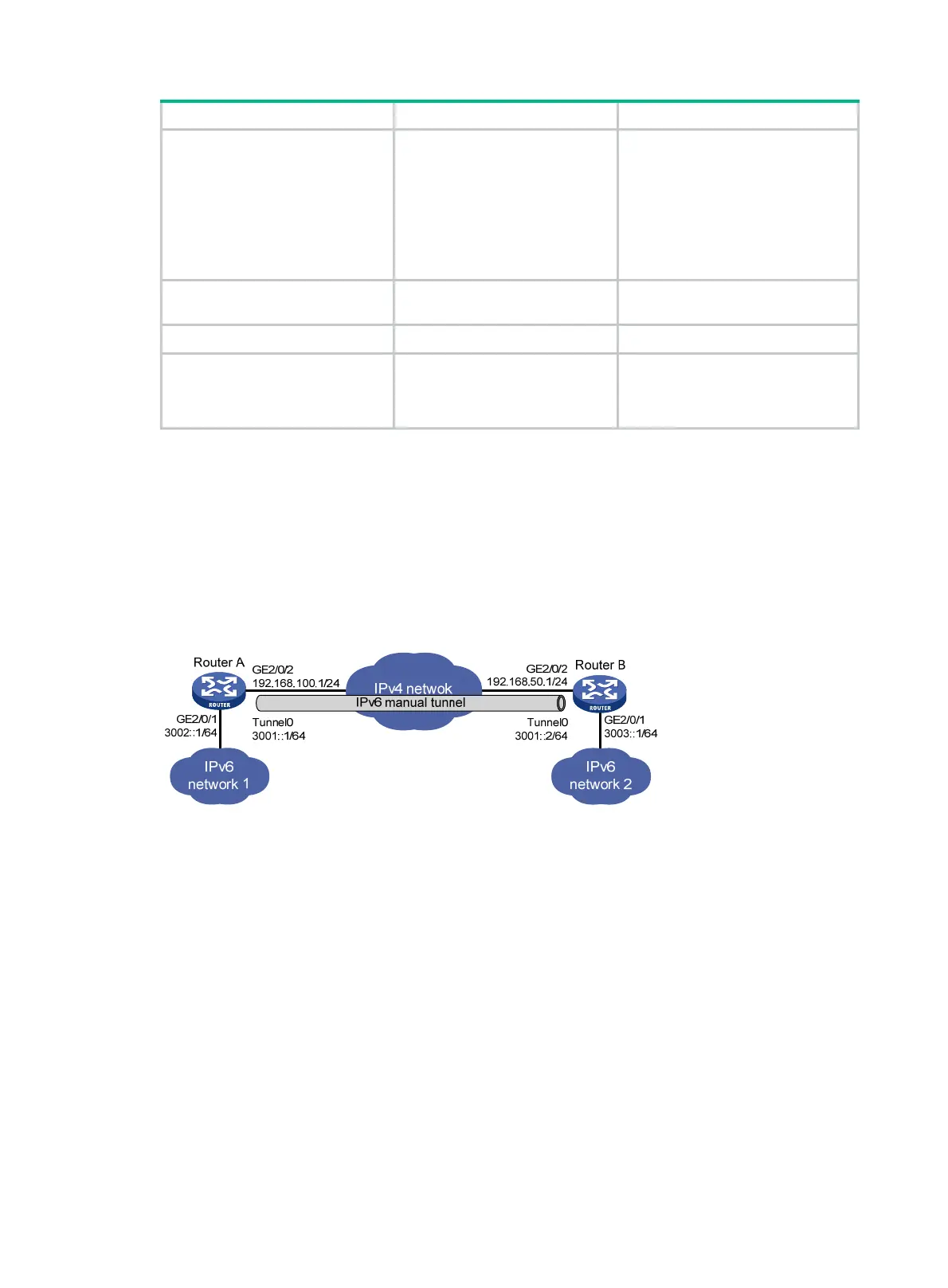295
Step Command Remarks
5. Configure a destination
address for the tunnel
interface.
destination
ip-address
By default, no destination address
is configured for the tunnel
interface.
The tunnel destination address
must be the IP address of the
receiving interface on the tunnel
peer. It is used as the destination IP
address of tunneled packets.
6. (Optional.) Set the DF bit for
tunneled packets.
tunnel dfbit enable
By default, the DF bit is not set for
tunneled packets.
7. Return to system view.
quit
N/A
8. (Optional.) Enable dropping
IPv6 packets that use
IPv4-compatible IPv6
addresses.
tunnel discard
ipv4-compatible-packet
By default, IPv6 packets that use
IPv4-compatible IPv6 packets are
not dropped.
Configuration example
Network requirements
As shown in Figure 122, configure an IPv6 over IPv4 tunnel between Router A and Router B so the
two IPv6 networks can reach each other over the IPv4 network. Because the tunnel destination IPv4
address cannot be automatically obtained from the destination IPv6 addresses, configure an IPv6
over IPv4 manual tunnel.
Figure 122 Network diagram
Configuration procedure
Make sure Router A and Router B can reach each other through IPv4.
• Configure Router A:
# Specify an IPv4 address for GigabitEthernet 2/0/2.
<RouterA> system-view
[RouterA] interface gigabitethernet 2/0/2
[RouterA-GigabitEthernet2/0/2] ip address 192.168.100.1 255.255.255.0
[RouterA-GigabitEthernet2/0/2] quit
# Specify an IPv6 address for GigabitEthernet 2/0/1.
[RouterA] interface gigabitethernet 2/0/1
[RouterA-GigabitEthernet2/0/1] ipv6 address 3002::1 64
[RouterA-GigabitEthernet2/0/1] quit
# Create the IPv6 over IPv4 manual tunnel interface Tunnel 0.
[RouterA] interface tunnel 0 mode ipv6-ipv4
# Specify an IPv6 address for the tunnel interface.

